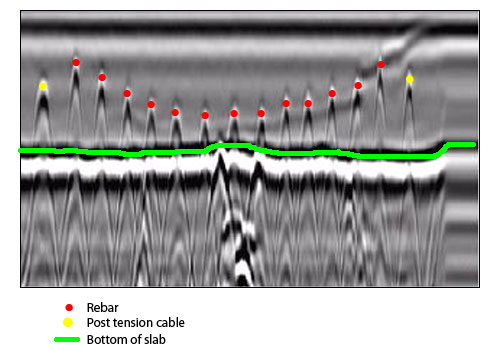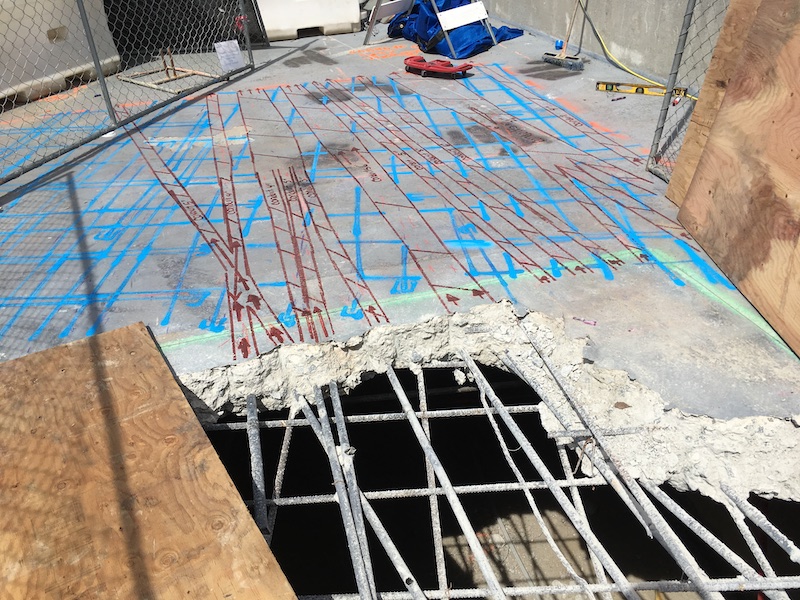Reveal the Transformative Power of Concrete Scanning in Making The Most Of Performance and Safety And Security
Concrete scanning has arised as a critical tool in the building and construction sector, using unrivaled advantages in enhancing job efficiency and ensuring security criteria. By utilizing sophisticated modern technology, concrete scanning enables professionals to see beyond the surface area, uncovering covert intricacies that might influence the structural stability of a structure. The transformative power of concrete scanning depends on its capability to give real-time data and in-depth understandings, transforming exactly how tasks are prepared and implemented. As we delve into the ins and outs of this cutting-edge method, a globe of opportunities opens, showcasing a brand-new era of building and construction techniques that prioritize precision and safety and security.
Value of Concrete Scanning
Ensuring the structural stability and safety of building and construction projects begins with the vital step of performing detailed concrete scanning. Concrete scanning is a non-destructive technique made use of to spot and map subsurface components within concrete structures.
The importance of concrete scanning can not be overemphasized, as it plays a vital function in preventing mishaps, reducing task hold-ups, and ensuring the long-term toughness of the building. By identifying possible threats before the building and construction stage begins, building contractors can execute ideal precaution and make informed choices pertaining to the style and implementation of the project. In addition, concrete scanning helps in maximizing task timelines and spending plan by staying clear of unforeseen costs and delays that may occur as a result of unforeseen blockages within the concrete. Inevitably, spending in complete concrete scanning is an aggressive strategy that enhances both efficiency and safety in construction projects.
Exactly How Concrete Scanning Works
Concrete scanning runs as a vital device in building projects by using innovative technologies to spot and map subsurface elements without creating structural damage. Ground Passing Through Radar (GPR) and Electromagnetic Induction (EMI) are two key techniques used in concrete scanning. GPR works by giving off high-frequency radar pulses into the surface area, which recuperate when they experience subsurface objects or gaps. The time considered the signal to return suggests the depth and place of the items. EMI, on the other hand, makes use of magnetic fields to determine variances in material make-ups, such as identifying rebar or avenues within concrete structures.
Throughout the scanning procedure, the information collected is evaluated in real-time, enabling instant identification of possible threats or obstacles beneath the surface. By utilizing these innovative technologies, concrete scanning substantially minimizes the danger of pricey damages and injuries on building sites.
Benefits of Concrete Scanning
One of the key benefits of concrete scanning is the capability to discover and find ingrained objects such as rebar, post-tension cords, and avenues properly. Concrete scanning assists in preparation and creating more properly, as it offers specific information regarding the place and deepness of architectural elements.

Instance Researches: Concrete Scanning Success

In an additional case, a building firm utilized 3D concrete scanning to evaluate the condition old concrete frameworks in a historic building. The in-depth scans provided useful understandings into the degree of damage and helped prioritize maintenance initiatives properly. By proactively addressing areas of worry identified via scanning, the business had the ability to expand the life-span of the framework and guarantee resident safety and security.
These study underscore the transformative power of concrete scanning in enhancing efficiency, precision, and security in building jobs.
Implementing Concrete Scanning in Projects
Implementing advanced scanning technologies during building and construction projects has become increasingly necessary for enhancing precision and safety. By incorporating concrete scanning right into job preparation and implementation, building teams can identify potential dangers, such as rebar or post-tension wires, concealed within concrete frameworks. This positive method reduces the danger of crashes, delays, and costly rework, ultimately leading to much more efficient project timelines and budgets.
To implement concrete scanning properly, job managers should team up very closely with seasoned scanning experts to identify one of the most ideal scanning strategies for the details job requirements. Involving scanning professionals from the early phases of a job enables have a peek at these guys the group to produce comprehensive scanning strategies that deal with key areas of worry and guarantee comprehensive information collection.
Additionally, incorporating concrete scanning right into normal project operations can improve decision-making procedures, as real-time scan information supplies immediate insights right into the condition of concrete frameworks - Concrete Scanning. This data-driven approach facilitates educated problem-solving and allows groups to make adjustments without delay, fostering a society of efficiency and safety and security throughout the project lifecycle

Final Thought
In verdict, concrete scanning plays an important duty in enhancing efficiency and security in construction jobs. By making use of innovative technology to map and identify out underlying structures within concrete, this process aids to prevent costly errors, make sure architectural honesty, and decrease risks on site. With the ability to discover surprise elements and supply exact information, concrete scanning confirms to be an important tool for optimizing job end results and making best use of overall success.
Concrete click here to find out more scanning is a non-destructive technique used to discover and map subsurface aspects within concrete structures. Additionally, concrete scanning helps in optimizing project timelines and budget by staying clear of unanticipated costs and delays that might emerge due to unexpected obstructions within the concrete. One notable instance research entails a large improvement job where concrete scanning played an essential role in ensuring project success.In another case, a building and construction firm used 3D concrete scanning to examine the problem of aging concrete frameworks in a historic building. By incorporating concrete scanning right into task planning and execution, building teams can determine possible threats, such as rebar or post-tension cords, hidden within concrete structures.